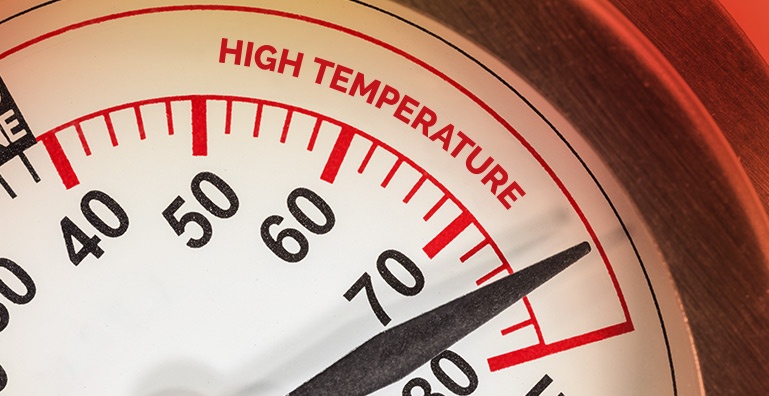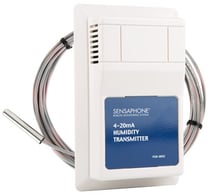
When you want to know the temperature outside, you might check your wall thermometer. Or maybe you check your phone. Or you go outside and see how it feels. There are many ways to get temperature readings. The same is true for the remote monitoring systems used to prevent facility and product damage.
Remote monitoring systems can get temperature and humidity data from four different devices:
- Dry contact switches
- Humidity switches
- Thermistors
- Transducers
All these devices monitor temperature and/or humidity and send the data to a Sensaphone remote monitoring system. When the system logs a reading above or below the specified range, an alarm triggers.
So are all these sensors interchangeable? The short answer is: no. The right sensor for your facility depends on your application and environment. If you’re monitoring sensitive products like vaccines in medical freezers, you need to select the best sensor for the job.
Dry Contact Switch
Dry contact switches, like the Sensaphone Temp Alert Temperature Switch, are simple devices. It is the easiest temperature alert sensor to set up. To set a high or low alarm limit, all you need to do is move the arms on the front of the sensor. When the temperature exceeds the limit, the sensor will close its contact and send the Sensaphone device into alarm. Also, sensors can be wired in parallel so that multiple sensors only take up one input. And you can view the temperature range and current temperature on the local display.

Dry contact switches have one major limitation. They can’t report an exact temperature. They can react if the temperature exceeds a specific range, but they can't say by how much.
Another disadvantage is that a dry contact switch is bulkier and less responsive than other sensors. It takes approximately 14 minutes to react to a temperature change. The switch has a smaller temperature sensing range and a greater margin of error (+-3°). It can only be used in ambient temperatures, so it would be a poor choice for a refrigerator or freezer.
Humidistat Humidity Switch
The Humidistat Humidity Switch uses the same concept, but with a dial instead of arms. It can detect either a high or low limit. When you get an alarm, you will know that the humidity is either above or below the set limit.
The switch type humidity sensor has a lower monitoring range than the transducer type, but you may add multiple devices to one input on a Sensaphone monitoring device.
Thermistors and Transducers

Let Your Application Be Your Guide
Your application will be the determining factor for which type of temperature alert sensor you should get. For less sensitive applications, the Temp Alert is sufficient and is easiest to set up. For sensitive applications, a thermistor or transducer is a better choice. That's because of their accuracy, data logging and reporting capabilities.
Still have questions about which sensor is best for your application? Need assistance setting up your system? Contact our technical team. We'd be glad to help.
You may also be interested in 3 Signs You Need a Temperature Monitoring System and 5 Questions for Buying a Wireless Temperature Monitoring System.







